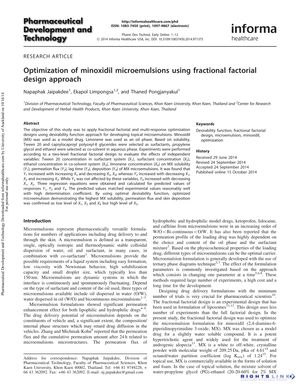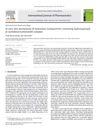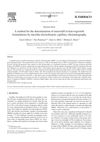Optimization of Minoxidil Microemulsions Using Fractional Factorial Design Approach
October 2014
in “
Pharmaceutical Development and Technology
”

TLDR The study found a way to improve a skin-applied minoxidil formula using a specific design method.
The 2014 study successfully optimized minoxidil (MX) microemulsions for topical delivery using a fractional factorial design approach. Key findings included that MX solubility was enhanced with higher ethanol concentrations and reduced surfactant and limonene levels. Permeation flux improved with lower Tween 20 and surfactant concentrations and higher ethanol levels, while skin deposition increased with lower concentrations of Tween 20 and surfactant. The study also determined that lag time for MX permeation was unaffected by the formulation variables. The optimized microemulsion, which showed high MX solubility, permeation flux, and skin deposition, was formulated with low levels of Tween 20, surfactant, and limonene, and a high level of ethanol. The study concluded that the fractional factorial design is an effective method for formulating MX-loaded microemulsions with desirable characteristics for potential use in topical delivery. However, the number of experiments and samples analyzed was not specified in the summary provided.




